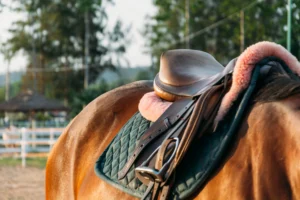Introduction
When it comes to essential horse care, providing clean, accessible water stands as one of the most fundamental responsibilities of any equine owner. The humble water trough for horses might seem like a simple piece of equipment, but it plays a critical role in maintaining equine health and wellbeing. Yet despite its importance, many horse owners remain unaware of several concerning truths about these seemingly straightforward watering systems.
As any experienced equestrian will tell you, horses are particularly sensitive creatures when it comes to their water consumption. The average 1,000-pound horse requires between 8-12 gallons of fresh water daily—with this requirement potentially doubling during hot weather or periods of intense exercise. This makes the selection, maintenance, and monitoring of your water trough for horses not just important, but absolutely critical to your animal’s survival and health.
While the market offers numerous options—from simple plastic buckets to sophisticated automatic watering systems—choosing the right water trough for horses involves more considerations than most owners initially realize. Material composition, size, placement, cleaning protocols, and seasonal adaptations all significantly impact your horse’s willingness to drink and the safety of their water supply.
In this comprehensive guide, we’ll expose three uncomfortable truths about water troughs for horses that every responsible owner needs to understand. We’ll examine how these common watering systems can harbor hidden dangers, present unexpected health risks, and sometimes even contribute to dehydration—the very problem they’re meant to prevent. Most importantly, we’ll provide practical, evidence-based solutions to ensure your horses stay properly hydrated year-round.
Whether you’re a seasoned equestrian or new to horse ownership, the information in this article might challenge some of your existing practices regarding your water trough for horses. However, understanding these realities is essential for providing optimal care for your equine companions.

Ugly Truth #1: Your Horse’s Water Trough Is Likely a Bacterial Breeding Ground
When you glance at your horse’s water trough, the water might appear clear and clean to the naked eye. However, this visual assessment tells only a fraction of the story. In reality, the average water trough for horses often harbors an alarming concentration of harmful bacteria, algae, and other microorganisms that can seriously compromise equine health.
Water Troughs for Horses
According to a study published in the Journal of Equine Veterinary Science, researchers found that the typical horse water trough can contain bacterial counts exceeding 100,000 colony-forming units per milliliter—even when the water appears visually clean. To put this in perspective, the EPA’s standard for safe human drinking water is less than 500 colony-forming units per milliliter.
The most common bacterial threats lurking in your water trough for horses include:
Pseudomonas aeruginosa
This opportunistic pathogen thrives in stagnant water environments like an unmaintained horse water tank. When ingested, it can cause respiratory infections, diarrhea, and even contribute to chronic inflammatory airway disease in susceptible horses.
Leptospira bacteria
These spiral-shaped bacteria can survive for weeks in a contaminated water trough for horses, potentially causing leptospirosis—an infection that can lead to kidney damage, abortion in pregnant mares, and serious systemic illness.Water Troughs for Horses
Blue-green algae (Cyanobacteria)
Particularly common in plastic water troughs exposed to sunlight, these toxic algae can produce neurotoxins and hepatotoxins that cause severe illness or even death when consumed from an infected water trough for horses.
Dr. Sarah Thompson, equine veterinarian at Colorado State University’s Veterinary Teaching Hospital, explains: “Many horse owners underestimate just how quickly bacterial populations can multiply in standing water. A water trough for horses can go from relatively clean to dangerously contaminated in just 24-48 hours during warm weather.”
Water Troughs for Horses
The material of your horse water trough significantly impacts bacterial growth rates. Studies show that plastic water troughs—while lightweight and affordable—provide ideal surfaces for biofilm development, the slimy bacterial colonies that adhere to surfaces and protect microorganisms from cleaning efforts. In contrast, a galvanized horse water trough or a metal horse water trough generally supports less biofilm development but introduces different concerns we’ll address later.
Water Troughs for Horses
Even more concerning, research published in Applied and Environmental Microbiology found that once established, biofilms in a water trough for horses can become resistant to standard cleaning methods, requiring more aggressive approaches to truly sanitize the container.
Prevention and Solutions:
To combat bacterial contamination in your water trough for horses, implement these evidence-based practices:
- Establish a regular cleaning schedule
- Empty and scrub your horse water trough completely at least twice weekly during summer months
- Use a stiff brush to physically remove biofilm from all surfaces
- Rinse thoroughly after cleaning to remove any cleaning agent residues
- Consider water additives designed for livestock
- Products containing stabilized hydrogen peroxide can safely reduce bacterial growth in your water trough for horses
- Apple cider vinegar (1 cup per 100 gallons) creates a slightly acidic environment that discourages bacterial proliferation
- Implement circulation systems
- Small, solar-powered water circulators prevent stagnation in large water troughs for horses
- Moving water dramatically inhibits bacterial colonization and algae growth
- Position strategically
- Place your horse water trough in partially shaded areas when possible
- Avoid locations where manure, feed, or soil can easily contaminate the water
- Water Troughs for Horses
As discussed in a helpful article on proper pet hydration from PetsPump.com, maintaining clean water sources is just as important for horses as it is for smaller domestic animals.
Water Troughs for Horses
Ugly Truth #2: Material Matters More Than You Think (And Most Choices Have Serious Drawbacks)

Walk through any farm supply store, and you’ll find an array of options for a water trough for horses—plastic models in bright colors, traditional galvanized horse water troughs, sophisticated automatic water troughs for horses, and premium stainless steel varieties. Each material presents its own set of advantages and concerning drawbacks that directly impact your horse’s health and willingness to drink.
Water Troughs for Horses
Plastic Water Troughs: Convenient but Problematic
The plastic water trough for horses remains the most popular choice due to affordability, lightweight design, and easy installation. However, research published in Environmental Health Perspectives raises serious concerns about these seemingly convenient containers:
Water Troughs for Horses
- Chemical leaching: Particularly in older or lower-quality plastic troughs, harmful chemicals like BPA and phthalates can leach into the water, especially when exposed to sunlight or extreme temperatures
- Rapid algae growth: The smooth, non-porous surface ironically makes plastic troughs ideal for algae colonization, particularly in sunny locations
- Temperature fluctuations: Water in plastic troughs heats up quickly during summer and can freeze more rapidly in winter compared to other materials
- Durability issues: The average plastic water trough for horses often cracks or becomes brittle after 2-3 years of exposure to the elements
Equine behavior specialist Dr. Katherine Williams notes: “Many horses actually drink less from plastic containers. The synthetic odors, especially in new troughs, can be off-putting to sensitive equines, leading to reduced water intake without owners realizing the cause.”
Galvanized Steel: Traditional but Not Without Risks
The galvanized horse water trough has served as the standard for generations of horse owners. While these metal troughs offer improved durability and better temperature regulation, they present their own concerns:
- Zinc toxicity risk: As the galvanized coating wears down, especially in water with specific mineral content or pH levels, zinc can leach into the water
- Sharp edges when damaged: Older galvanized troughs often develop dangerous sharp edges that can cut horses as they drink
- Heat conductivity: Metal troughs can become exceptionally hot in direct summer sun, potentially burning sensitive muzzles
- Rust and corrosion: Once the protective coating is compromised, these troughs deteriorate rapidly, potentially contaminating water with iron oxide
- Water Troughs for Horses
A 2019 study in the journal Toxicology Letters found that water sitting in damaged galvanized containers for more than 72 hours sometimes contained zinc levels exceeding recommended safety thresholds for livestock consumption.
Automatic Watering Systems: Convenient but Complex
The automatic water trough for horses with float valve systems represents the technological solution to watering challenges. While these systems offer constant fresh water access, they come with substantial concerns:
- Hidden contamination: The enclosed design makes visual inspection difficult, allowing bacterial growth to go unnoticed
- Mechanical failures: Float valves frequently malfunction, potentially leaving horses without water
- Temperature management challenges: Many automatic systems struggle with freezing in winter unless you invest in a heated water trough for horses
- Reduced monitoring: Owners typically check water less frequently when using automatic systems, potentially missing early signs of decreased consumption
- Water Troughs for Horses
- Water Troughs for Horses
“The biggest issue I see with automatic watering systems is the false sense of security they provide owners,” explains Dr. Robert Henderson, equine water quality specialist. “People assume the system is working properly and stop monitoring their horse’s actual water consumption patterns.”
Concrete Troughs: Durable but Difficult
While less common than other options, permanent concrete water troughs for horses offer exceptional durability but present unique challenges:
- Cleaning difficulty: Their porous surface harbors bacteria and can be nearly impossible to fully sanitize
- Repair challenges: When concrete troughs crack or leak, repairs are complex and often temporary
- Alkalinity issues: New concrete can leach lime into water for months, raising pH to levels horses find unpalatable
- Immobility: Once installed, these troughs cannot be relocated to accommodate changing needs or seasonal considerations
- Water Troughs for Horses
The Best Material Choice for Your Horse Water Trough
While no perfect material exists for a water trough for horses, the current consensus among equine health experts leans toward high-density polyethylene (HDPE) food-grade plastic troughs for most situations. These specialized containers minimize chemical leaching while offering reasonable durability and maintenance characteristics.
For those with sufficient budget, 304-grade stainless steel represents the premium choice for a horse water tank, combining exceptional durability with minimal chemical interaction—though the high initial investment deters many owners.
As recommended in this comprehensive guide to horse care on PetsPump.com, regularly monitoring your horses’ water consumption patterns matters more than the specific trough material, as sudden changes in drinking habits often signal developing health issues.
Water Troughs for Horses
Ugly Truth #3: Your Water Trough Setup May Actually Be Causing Dehydration
Perhaps the most alarming truth regarding your water trough for horses is that despite your best intentions, your current watering setup might actually contribute to dangerous dehydration. This seemingly counterintuitive situation occurs with alarming frequency and stems from several factors horse owners frequently overlook.
Temperature Extremes Deter Drinking
Research from the University of Pennsylvania’s School of Veterinary Medicine reveals that horses significantly reduce water consumption when water temperatures fall below 45°F or exceed 80°F. Yet many standard water troughs for horses do nothing to moderate these temperature extremes.
During winter months, without a proper horse trough heater or heated water trough for horses, water temperatures can approach freezing, dramatically reducing consumption. Studies show horses drink up to 40% less water when temperatures drop below 39°F—setting the stage for impaction colic, one of the leading emergency conditions in equine medicine.
Water Troughs for Horses
Conversely, during summer months, water in an exposed horse water trough can exceed 85°F, becoming unpalatable to many equines. Dr. Eleanor Matthews, equine nutritionist, explains: “Horses evolved drinking from cool springs and running streams. Stagnant, warm water violates their natural preferences and often results in reduced consumption, even when their physiological need for water increases during hot weather.”
Inadequate Size and Number of Troughs
Another overlooked factor in equine dehydration relates to the dimensions and availability of watering options. For group-housed horses, providing only a single water trough for horses—even a large water trough for horses—often results in resource guarding by dominant animals.
Research published in Applied Animal Behaviour Science found that subordinate horses in group settings consumed 30% less water when only one water trough for horses was available, compared to situations with multiple watering stations. This decreased consumption occurred despite adequate water quality and volume.Water Troughs for Horses
Additionally, many owners underestimate appropriate sizing needs. The recommended minimum size for a water trough for horses housed in groups should provide at least 12 square feet of surface area per 5-6 horses to ensure adequate access for all herd members.
Water Troughs for Horses
Poor Placement Creates Accessibility Issues
The location of your water trough for horses significantly impacts consumption patterns. Common placement errors include:
- Positioning in high-traffic areas: Troughs placed near gates or in busy pathways often deter timid horses from drinking adequately
- Excessive distance from feed sources: Research demonstrates horses prefer water sources within 50 feet of where they eat
- Exposure to frightening stimuli: Troughs placed near roads, machinery, or other scary elements reduce usage by nervous equines
- Inconvenient height: The ideal horse water trough height positions the water surface 2-3 feet from the ground, matching natural drinking postures
- Water Troughs for Horses
“I frequently consult on cases where horses are technically provided adequate water volume, but the presentation or location of that water makes it functionally unavailable,” notes Dr. James Peterson, equine behavior consultant. “Simply relocating the water trough for horses to a more protected, quiet area often resolves apparent dehydration issues within days.”
Undetected Quality Issues Affect Palatability
Even with a perfectly sized, ideally located water trough for horses, water quality issues can significantly deter consumption. Common palatability problems include:
- Mineral imbalances: Particularly high sulfur, iron, or salt content makes water unpalatable
- Algae-produced compounds: Even before visible growth appears, some algae release compounds detectable by horses
- Pharmaceutical residues: Trace medications from treated water sources can affect taste
- Biofilm by-products: Bacterial colonies produce waste compounds horses can detect before humans notice contamination
- Water Troughs for Horses
A revealing study from Michigan State University found that when given a choice, horses consistently selected water with lower total dissolved solids (TDS) measurements, even when the higher TDS water met all safety standards for livestock.
Solutions to Prevent Dehydration
To ensure your water trough for horses promotes adequate hydration rather than discouraging it:
- Implement temperature management strategies
- Use a heated water trough for horses or add a horse trough heater during winter months
- Install shade structures over troughs during summer
- Consider buried troughs that utilize ground temperature to moderate extremes
- Provide multiple watering options
- Install several smaller troughs rather than one large container
- Offer different watering styles (horse water bucket, horse water bowl, and traditional troughs)
- Create a portable horse water trough option that can be moved to different areas of your property
- Test water quality regularly
- Invest in professional water testing annually
- Use TDS meters to monitor changes in water composition
- Watch for changes in color, odor, or clarity
- Monitor actual consumption
- Mark water levels and track daily usage
- Observe drinking behavior across different horses
- Note seasonal changes in consumption patterns
- Water Troughs for Horses
As demonstrated in this helpful article on recognizing dehydration in pets from PetsPump.com, monitoring water intake serves as a crucial early warning system for many health issues.
Essential Considerations When Selecting a Water Trough for Horses
Armed with understanding about the potential problems associated with water troughs for horses, making an informed selection becomes critical. Here’s what experts recommend considering when evaluating options for your equine watering system:
Water Troughs for Horses
Size and Capacity Requirements
The appropriate size of your horse water trough depends on several factors:
- Number of horses: Plan for a minimum of 20 gallons of capacity per horse
- Refill frequency: Larger troughs require less frequent refilling but need more aggressive cleaning
- Climate conditions: Hotter regions necessitate larger capacity to account for evaporation
- Water pressure/source: Consider your ability to refill based on your water system
Dr. Jennifer Caswell, equine management specialist, advises: “I recommend the largest water trough for horses that you can reasonably clean rather than multiple smaller containers. This provides some buffer against pump failures or temporary water outages.”
Specialized Features Worth Considering
Modern water troughs for horses offer various features that may justify additional investment:
- Insulated designs: Double-walled troughs help maintain more consistent water temperatures
- Built-in filtration: Some premium models include basic filtration systems
- Anti-freeze protection: Critical for cold-climate horse watering systems
- UV-resistant materials: Particularly important for plastic troughs exposed to sunlight
- Smooth, rounded edges: Essential safety feature regardless of material
- Drain plugs: Make cleaning significantly easier and more thorough
Installation Considerations
Proper installation of your water trough for horses dramatically impacts its functionality:
- Stable, level foundation: Prevents tipping and ensures proper water distribution
- Protection from prevailing winds: Reduces debris contamination and evaporation
- Accessibility for cleaning: Ensure equipment can reach all parts of the trough
- Proximity to electrical sources: Important if using a heated water trough for horses
- Overflow management: Proper drainage prevents mud development around the trough
Budget Realities
While premium options like stainless steel automatic systems represent the gold standard, budget constraints often necessitate compromises. For those seeking an economical cheap water trough for horses without sacrificing essential functionality:
- Consider mid-grade HDPE plastic models from reputable agricultural suppliers
- Invest in aftermarket protection (like shade covers) rather than built-in features
- Focus budget on cleaning supplies and regular maintenance tools
- Consider reconditioned food-grade containers as alternative watering options
“The most expensive water trough for horses isn’t necessarily the best for your situation,” explains equine facility designer Thomas Richards. “A moderately-priced trough that’s properly maintained will serve horses better than a premium model that’s neglected due to complicated maintenance requirements.”
Seasonal Adaptations
The ideal water trough for horses changes with the seasons, particularly in regions with extreme temperature variations:
Summer considerations:
- Larger capacity compensates for evaporation
- Shade structures become essential
- Algae prevention requires additional attention
- Cleaning frequency typically doubles
Winter requirements:
- Smaller volume sometimes allows easier ice management
- Electric heating elements become necessary in many regions
- Insulation significantly reduces electricity costs
- Dark-colored troughs absorb more solar heat
For comprehensive seasonal horse care information, this article on preparing pets for seasonal changes from PetsPump.com provides valuable insights applicable to equines.
Maintenance Protocols for Horse Water Troughs

Regardless of which water trough for horses you select, proper maintenance proves essential for ensuring water safety and palatability. Implement these professional recommendations to optimize your water management:
Daily Maintenance
- Visual inspection: Check water clarity, level, and function of any mechanical components
- Remove debris: Skim leaves, insects, and floating material
- Observe consumption: Note any significant changes in water usage
- Check temperature: Ensure water remains in the 45-65°F optimal range
- Verify function: For automatic water trough for horses systems, confirm proper operation
Weekly Deep Cleaning
- Complete emptying: Drain the horse water trough entirely
- Physical scrubbing: Use stiff brushes to remove all biofilm and residue
- Sanitizing: Apply appropriate sanitizing agents (1:10 bleach solution or commercial livestock tank cleaners)
- Contact time: Allow sanitizer to remain in contact with surfaces for 10-15 minutes
- Thorough rinsing: Remove all cleaning agents before refilling
- Complete refill: Restore full water level promptly
Monthly Preventative Maintenance
- Check structural integrity: Inspect for cracks, leaks, or damage
- Examine valves and fittings: For horse water trough with float valve systems, verify proper mechanical function
- Test water quality: Use test strips to check pH, hardness, and chlorine levels
- Clear drainage systems: Ensure overflow pipes remain unobstructed
- Inspect heating elements: For heated water trough for horses setups, verify proper function
Seasonal Protocols
Spring transition:
- Deep clean to remove winter algae growth
- Check for freeze damage to components
- Gradually transition from heated to unheated setups
Fall preparation:
- Install and test heating elements before first freeze
- Consider reducing trough volume for easier winter management
- Apply winterization treatments as appropriate
“The difference between a dangerous water trough for horses and a safe one often comes down to consistent maintenance rather than initial quality,” emphasizes Dr. Michael Branson, equine environmental health specialist. “Even basic containers can provide safe water when properly maintained.”
Innovations in Horse Watering Systems
The field of horse watering systems continues to evolve, with several promising innovations worth considering:
Solar-Powered Circulation Systems
These affordable additions to traditional water troughs for horses use small solar panels to power water movement devices, dramatically reducing algae growth and improving oxygenation without requiring electrical connections.
Remote Monitoring Technology
Emerging technologies allow remote monitoring of water trough for horses systems, alerting owners to:
- Unexpected changes in water level
- Temperature fluctuations
- Power failures affecting heaters
- Changes in water quality parameters
Structured Water Systems
Based on principles of water molecule organization, some innovative equine water trough designs incorporate materials that allegedly improve water structure and bioavailability, potentially increasing hydration efficiency.
Gravity-Fed Filtration
Passive filtration systems utilizing activated carbon, ceramic, or specialized media can improve water quality in the horse water trough without requiring power or complex maintenance.
For those interested in cutting-edge approaches to animal care, this article on innovative pet care technologies from PetsPump.com explores similar advancements applicable to equine management.
Conclusion: Providing Safe, Appealing Water for Optimal Equine Health
Understanding the ugly truths about water troughs for horses may initially seem discouraging, but this knowledge empowers responsible owners to make better decisions regarding their equine watering systems. By acknowledging these challenges and implementing appropriate solutions, you can ensure your horses receive the clean, palatable water they require for optimal health.
Remember that water represents the single most important nutrient for horses, comprising approximately 65-75% of an adult horse’s body weight. Inadequate hydration impacts every physiological system, potentially leading to serious health issues including impaction colic, kidney dysfunction, and decreased athletic performance.
Your choice of water trough for horses directly influences your animals’ willingness to drink and the safety of their water supply. Whether you select a galvanized horse water trough, plastic water trough for horses, or sophisticated automatic water trough for horses, understanding the inherent limitations of each option allows you to implement appropriate countermeasures.
Most importantly, recognize that no water trough for horses functions effectively without regular monitoring and maintenance. The most expensive, technologically advanced system cannot compensate for neglected cleaning or poor placement. Conversely, even basic watering options can provide safe, palatable water when properly maintained and strategically positioned.
By addressing the bacterial challenges, material limitations, and potential dehydration factors discussed in this article, you demonstrate the kind of informed, proactive care that characterizes exemplary horse ownership. Your horses cannot tell you about water quality concerns or express their preferences verbally—they rely entirely on your knowledge and diligence regarding their water trough for horses.
For more information on optimal equine care practices, visit PetsPump.com for comprehensive resources on animal health, nutrition, and environmental management. Their articles on choosing the right equipment for your pets and preventing common health issues provide valuable insights applicable to horse care.
By implementing the recommendations outlined in this article, you transform potential challenges into opportunities for providing superior care—ensuring your horses remain properly hydrated and healthy throughout the changing seasons and circumstances of equine ownership.






